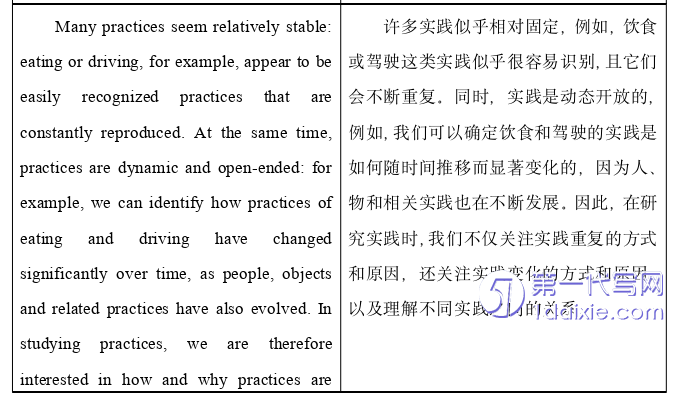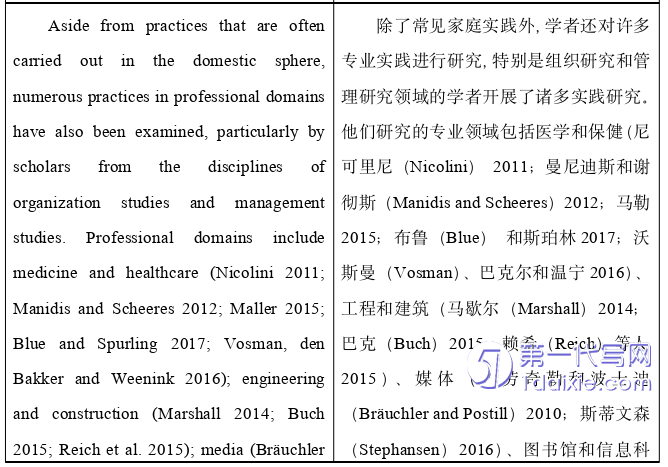本文是一篇英语论文,本报告在曼彻斯特大学翻译与跨文化研究中心主任Maeve Olohan撰写的第二章《从翻译和实践理论中理论化实践》中展示了翻译任务的整个进展。通过这种实践,本报告的作者获得了更多的翻译实践经验。
Chapter 1 Introduction
1.1 Background of the Task
The course of translation began with the first human being’s birth,when he/shebegan to speak with his/her companions in order to put his/her thoughts into words.In thehistory of translation,this can be considered the initial and first step.Later,when humancivilizations and cultures evolved,it began to take shape in accordance with the needs ofhuman communities.

The relationship between translation theory and translation practice is dominated bythe general dialectics of human historical process.As the communication of literature andculture becomes a frequent phenomenon,the work of translating texts/messages from onelanguage to another language becomes necessary and important.Different perspectivesregarding the relationship between the theory and the practice of translation evolved astranslating texts/messages become prevalent.Some people think that the practice oftranslation inevitably produces guiding theories of translations,while others view thetranslation theory as nothing but a conclusion of certain phenomena discovered in theprocess of translation.However,people gradually came to realize that their translatingexperience is the translation theory in practice,which may play an important role inguiding the practice of translation.
1.2 Significance of the Task
A lot of simplified Chinese translation work shows few innovations.Translatorsrarely have their own ideas,they usually blindly follow foreign translation methods,andonly provide literal meaning of words or sentences when doing translation work.Most ofthe previous translation theories in China are based on the opinions of translationpractitioners from their own translation practice,such as Yan Fu’s‘faithfulness,expressiveness and elegance’.This should enlighten our translation researchers.On theone hand,we call on translation practitioners to put forward their own theoretical views,so as to raise their thinking in translation to the theoretical level,and to guide othertranslation practice.On the other hand,if the majority of translation theory researchers inour country does not engage in translation practice,then we ought to study the translator’sown feelings on translation,explore the common translation characteristics of translators,and raise these characteristics to a theoretical level.
In the long history of China,tremendous translation practices have been conductedand many translators have shed light on translation.Some of them studied the gains andlosses of existing translated texts,and others studied the translation experience of ancientand modern translators in China.Finally,these scattered pieces were put together to forma group of relatively systematic translation theories.These theories are playing animportant role in guiding a large number of people who are engaged in or will be engagedin the translation practice.From this we find that our translation practitioners’understanding and experience of translation is exactly the research object of translationtheorists.Although Chinese translation theorists seldom engage in real translation practice,their research objects just come from real practice.Their translation theory is also derivedfrom practice,which does not violate the principle of epistemology.Therefore,this bookprovides new ideas and valuable experience for the existing Chinese translators,andassists in guiding and training future translators.
Chapter 2 Translation Process
2.1 Pre-translation
Some preparations such as analyzing the content and language style of the originaltext,studying parallel texts with reference to the translation-oriented text analysis model,selecting appropriate translation tools and determining translation strategies were donebefore entering the translation stage.
Choosing suitable translation tools assists in and speeds up the translation process.Two translation software were chosen in this work.The first one is Google Translate,which is free of charge,providing translation of words,sentences even wed pagesbetween any two languages.Although Google Translate is able to translate the literalmeaning of the original text,some inflexibility shows in its processing of sentences.Thesecond translation tool,Deepl,was adopted to fill in this gap.Deepl provides accurate andauthentic translations of words and sentences.Some teachers were also inquired whenencountering difficulties in the process of translation.
As a student majored in MTI,reference books are indispensable.Before thetranslation,two English dictionaries,namely Collins Learner’s English-ChineseDictionary and Merriam-Webster Collegiate Dictionary were prepared.Both dictionariesare known for their reliable and authoritative translation of words.The translation processwas guided by Newmark’s text typology theory.Some secondary sources were referencedto have a better understanding of the original text.
2.2 While-translation
The greatest difficulty in translation is to thoroughly understand the signifiedmeaning and associative meaning of the text to be translated(Nida,1993:2).Peter Newmark mentioned that‘in order to find an appropriate translation method,thetranslator must first make clear the purpose and means of writing’(Newmark,2001:101).This requires the translator to have a deep understanding of the original text in advance.
A complete translation process involves several different stages.Translation is aprocess of converting source language into target language,which includes three steps:pre-translation,mid-translation and post-translation(刘锡,2013:4).Understanding is theprerequisite,expression is the key step,and proofreading is the final guarantee.As said,‘To do a good job of translation,we must have a thorough understanding of the originaltext’(要做好翻译工作,必得对原文有彻底的了解)(吕叔湘,1951:01).The first step oftranslation is to navigate the original text.
The resulting translation can only be logical,accurate and smooth when the originaltext were understood.In order to ensure readers to have a consistent understanding of theoriginal text,the actual translating work was carried out combining literal and freetranslation strategies.
Chapter 3 Source Text Analysis Under the Guidance of Text Typology Theory.....9
3.1 Overview of Text Typology Theories...........................9
3.2 Analysis of the Source Text................................11
Chapter 4 Case Study..........................................13
4.1 Translation at the Lexical Level..........................................13
4.1.1 Terminology................................13
4.1.2 Pronouns...............................15
Chapter 5 Conclusion.....................................26
5.1 Major Findings................................26
5.2 Limitations and Suggestions....................................27
Chapter 4 Case Study
4.1 Translation at the Lexical Level
The importance of vocabulary in translation practice is self-evident,and it is one ofthe important unit structures of sentences.The accuracy of vocabulary translation is notonly related to the quality of the translation,but also related to whether the information ofthe original text can be transmitted to the readers of the translation.In informative texts,lexical translation is extremely important and can be said to be the skeleton ofinformational texts.Because the text selected by the author is an informative text in thetext typology,it is necessary to ensure that the translation is rigorous and accurate.Whentranslating vocabulary,the author adopts the principle of Newark’s semantic translationas the main principle and communicative translation as supplementary principle totranslate.In the translation,the author need to read the whole passage first and search themeanings of the words before the finalization of the translation.

Chapter 5 Conclusion
5.1 Major Findings
This report unfolds the whole progress of the translation task on the second chapter:Theorizing Practice from Translation and Practice Theory written by Maeve Olohan,theco-director of the Center for Translation and Intercultural Studies at the University ofManchester.Through this practice,the author of this report has gained more practicalexperience in translating.
Firstly,translation is a process where the translator should do the job step by step toachieve final success.The author of this report had a lot of trouble with the translationprocess,especially when it comes to translating a book or even part of the book.Onlypracticing more,can the ability of translating be improved.Moreover,translation is notaccomplished overnight.It needs to be pondered and revised over and over again.
Secondly,the successful completion of translation tasks cannot be achieved withoutcorrect theoretical guidance and translation strategies.The report took full account oforiginal content and readable translations in the target language,following the guidanceof Newmark’s Text Typology Theory.At the same time,translation strategies for specifictranslation object of source text were proposed with examples.On the lexical level,translator should paid great attention to the choice of words aiming at representing theoriginal meaning of source language to target readers.On the syntactic level,translatorshould reorganized the words order to make the translated text written in a clarified andintelligible way.On the textual level,translator should adjust the language form whentranslating in order to generate a translation that conforms to the characteristics of thetarget text.
reference(omitted)
